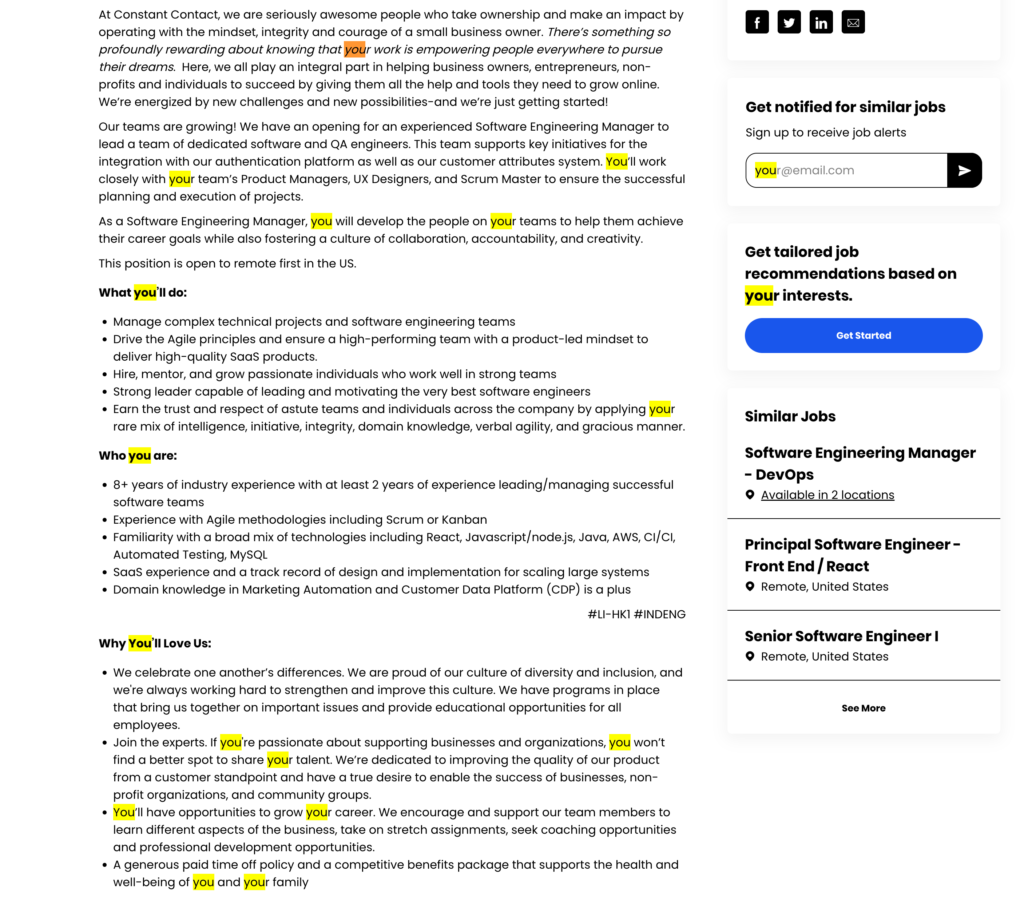- How to Use Microsoft Word’s Readability Feature: 3 Easy Tips - March 14, 2025
- 3 Free Job Description Templates for Google Docs - February 27, 2025
- 10+ Free Job Description Template for Word Examples - January 15, 2025
A job posting is the first interaction candidates have with your company. And, first impressions last. So, it’s important to be consistent.
Here are 4 job posting inconsistencies that might confuse candidates. Or keep them from applying.
1. Conflicting Salary Information
Do some of your job postings have salary information and others don’t?
It’s not required (unless you are in certain states), but candidates care about salary. Unless there’s a legal reason not to…list salary details, even if it’s just a range.
But be consistent. If one of your job postings says “attractive pay, one says “Salary Range: $65,000-$75,000 a year,” and another says “pay commiserate with experience,” your job postings lack consistency.
Choose one format (across your company or by department) for a more unified salary section.
2. Multiple Writing Styles
Your writing style gives job seekers an idea of what to expect in terms of company culture. If your company has 10 hiring managers using a casual writing style and another 10 using a formal one, your job postings will be inconsistent.
You want your job postings to fit your brand and tell your culture story. Writing style inconsistencies confuse candidates. This is especially true when companies re-brand or merge. If you keep the same job posting language from 2 different “brands,” the writing styles will almost always be inconsistent.
Many companies hire job description writers whose specialty is creating a unified (and inclusive) voice for job ads.
3. Using Different “Points of View”
I, you, them — writing your job ads in any of these points of view (POVs) is perfectly acceptable. What causes inconsistency is having job ads from the same company (or same department) in different POVs.
Depending on your company’s branding, you are free to use whichever POV you want, but keep it uniform throughout. But, know that using a third-person POV (they, them, the candidate) might sound cold or distant, turning off potential applicants.
Using a first-person (I, me, we, our) and second-person POV (you, you’re, yours) in your job postings is more conversational. And connects better with candidates.
Here’s an excellent example of a consistent POV from Constant Contact. They use “you language” across all of their job postings…consistency!

4. Inconsistent Formatting
Are you using section headers, bullet points, and the same font type in all of your postings? All of these make your job ad organized and easy to read. Using the same format makes your job postings look polished and professional.
When you use different formats, you open the door for inconsistency. This happens a lot across departments. The legal department might use section headers with bulleted lists of “daily duties,” while the creative team uses paragraphs of text to describe the day-to-day.
Or, different departments might use different section headers (e.g., “Salary & Benefits” vs. “What’s in it for you”).
Different font styles can creep into job postings too. Especially if hiring managers are copy-pasting from old Word docs.
Creating job description templates helps remove these inconsistencies. Some co.s have one template for all of their job postings. Others have a few that span across business units or job families.
Why I wrote this?
Our mission is to create effective and inclusive job descriptions. This includes allowing you to build custom templates, so your JD content is consistent across departments. Please request a demo to learn more.
Shout-outs:
- 4 common mistakes when organizations advertise a job (by Henrik Ryden for Impactpool for Employers)
- 7 Tips for Writing Job Descriptions That Attract Candidates (by LinkedIn)
- Avoid these 5 common job posting mistakes (by Katie Loehrke)
- Shedding light on the job search (by the Ladders staff)
- 15 Common Mistakes Found in Job Ads (by Joel Syder for Zippia)
- Five Job Posting Mistakes You Should Never Make (by Paychex Worx)
- Feature Image (by Andrea Piacquadio from Pexels)
